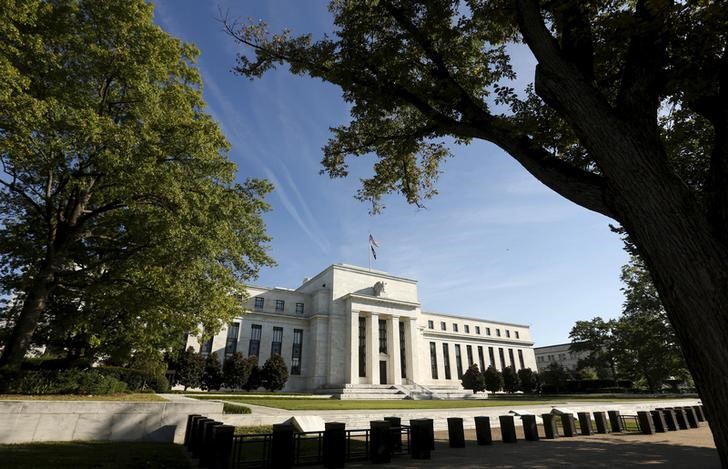By Lindsay Dunsmuir and Jason Lange
WASHINGTON (Reuters) - The U.S. Federal Reserve kept interest rates unchanged on Wednesday and downplayed weak first-quarter economic growth while emphasizing the strength of the labor market, in a sign it was still on track for two more rate rises this year.
In a bullish statement following the end of a two-day policy meeting, the central bank also said consumer spending continued to be solid, business investment had firmed and inflation has been "running close" to the Fed's target.
"The committee views the slowing in growth during the first quarter as likely to be transitory," the Fed said in a unanimous statement.
The labor market continued to strengthen even as growth in economic activity slowed and "the fundamentals underpinning the continued growth of consumption remained solid," policymakers added.
The Fed raised its benchmark rate by a quarter percentage point at its last meeting in March to a target range of 0.75 percent to 1 percent.
Before this week's meeting most Fed policymakers had made it clear that in contrast to previous years the central bank feels more confident in its forecast of two more rate increases in 2017.
Wednesday's affirmation from the Fed that it was optimistic on economic growth and that its rate rise plans remained intact bolstered the dollar against the euro and yen and pushed Treasury yields slightly higher.
"They went out of their way to emphasize this is not something they see persisting and pretty much says to me that their two rate hikes are still on the table for the balance of the year," said Heidi Learner, chief economist at Savills Studley.
NORMALIZING RATES
The Fed is in its first tightening cycle in more than a decade after it spent years keeping rates near zero to nurse the economy back to health following the 2007-2009 recession.
Policymakers have been buoyed by recent economic data that showed a surge in business investment and the fastest wage growth in a decade. The unemployment rate also fell in March to near a 10-year low.
However, some officials had also said they wanted more data in hand before taking additional steps to normalize rates. Gross domestic product grew at a sluggish 0.7 percent annual pace in the first quarter as consumer spending almost stalled. Job growth also slowed sharply in March.
Economists have largely attributed the weak first-quarter GDP reading to recurring issues with the calculation of growth during the January-March period and linked the pullback in hiring to weather.
Policymakers are awaiting clarity on the size and scope of the tax cuts, infrastructure spending and regulatory changes that the Trump administration will be able to push through Congress. A stimulus package could speed up the pace of rate hikes.
Inflation had been edging higher, but the so-called core PCE price index increased 1.6 percent in the 12 months through March, the smallest gain since last July. Core PCE is the Fed's preferred inflation measure and is below its target.
The Fed in its statement showed little concern about a softening in inflation, characterizing it as "running close to the committee's 2 percent longer-run objective."
The rate-setting committee is also gearing up to announce sometime this year when and how the Fed will begin shrinking its $4.5 trillion balance sheet. Wednesday's statement offered no new details.

Fed officials will hold their next policy meeting on June 13-14.